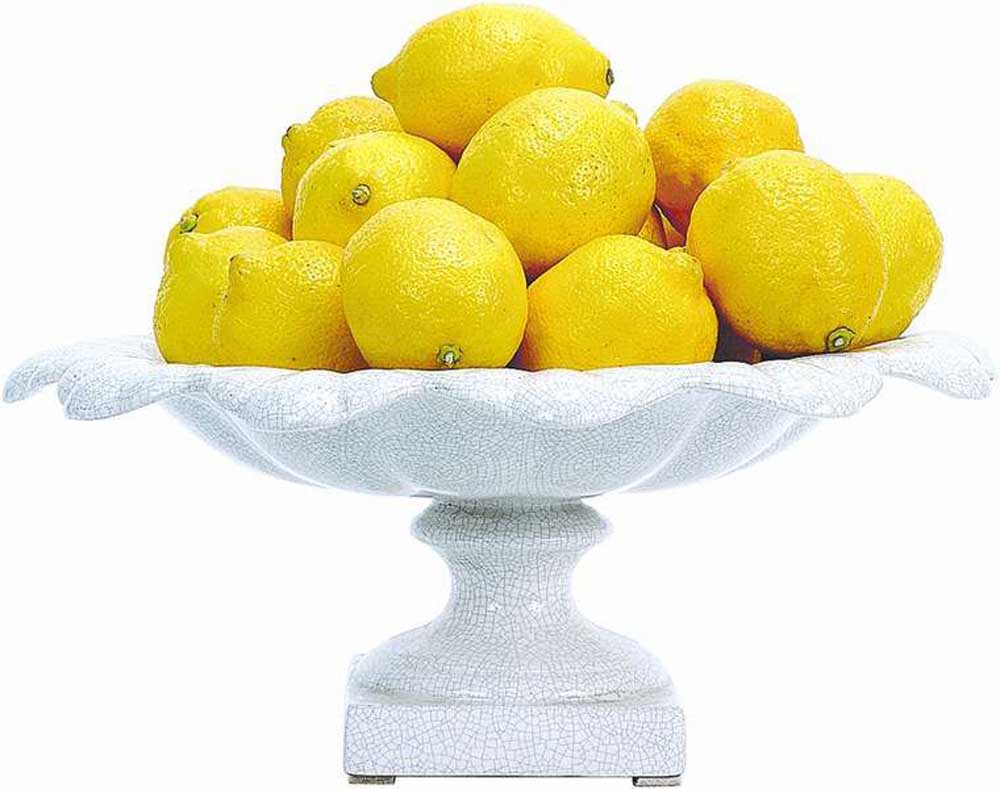Keeping lemons from going moldy
Published 12:51 pm Friday, December 13, 2013

- If you wash your lemons and set them in a bowl, water will pool at the bottom, which explains why the bottom lemon is usually the one that gets moldy first. Thoroughly dry your lemons after washing them to help prevent this.
Q: How do I keep lemons fresh after I get them home? I always find a moldy one at the bottom of the fruit bowl.
A: As with most fungi, fruit mold thrives in warm, damp environments. If you wash your lemons and set them in a bowl, water will pool at the bottom, which explains why the last lemon standing is usually the one that gets moldy first. Thoroughly dry your lemons after washing them to prevent fungus-friendly moisture from collecting at the floor of the bowl.
Trending
Another cause of dampness in your fruit bowl is condensation. The kitchen is one of the warmest and steamiest parts of a home, and a lemon’s nubby rind is as good a place as any for humidity to collect. If you keep your lemons exposed, dry them with a cloth every day or so. It may also be wise to rotate and restack them so each fruit has a chance to get some air.
The bowl itself may also be to blame. Mold spores are very resilient and can lurk unnoticed on kitchen surfaces, so adding fruit to an unclean, spore-exposed bowl increases the risk of contamination. Even if your last batch of fruit remained mold-free, scrub your bowl with very hot water and dishwashing liquid to get rid of any possible spores, and let it dry completely before adding new fruit.
Tending hibiscus plants
Q: How do I care for my potted hibiscus in the winter?
A: Keeping a potted tropical plant alive through the cold months may feel like a chore, but come springtime, you’ll be rewarded for your efforts with a flush of blooms. Besides, according to Marc Hachadourian, manager of the Nolen Greenhouses and Exhibitions at the New York Botanical Garden, helping hibiscus survive over the winter requires no more care than a traditional houseplant.
Like most tropical plants, the hibiscus needs direct sunlight. Bring it in before the first sign of chillier weather — anything under 50 degrees — and station it in the sunniest area of your house. If the air in your home tends to get dry in the winter, consider running a humidifier to make the conditions more favorable for a tropical plant. (Keep in mind: “Extra watering will not compensate for lack of humidity,” says Hachadourian.) Higher humidity will also help deter one of the most common winter pests for hibiscus: spider mites.
Trending
While a hibiscus is in its rest period, its leaves will turn brown and some of them, but not all, will fall off. This is normal. Clear away the leaves that have fallen naturally. And wait until you see new growth before you cut away any of the older foliage.
The plant may continue to flower, but by midwinter it probably won’t be looking its best. Again, this is normal, and it is important to resist the temptation to revive the plant by overwatering it; this only causes root rot and encourages leaves to drop. Instead, stick to a relaxed watering schedule that gives the plant time to soak up nutrients at its own place. Before you water, check the soil for dampness; if it seems wet, let it dry out before giving it more water. Potting the hibiscus in soil that drains well (a blend of store-bought potting mix and compost works well) will make it easier to avoid excessive dampness.








